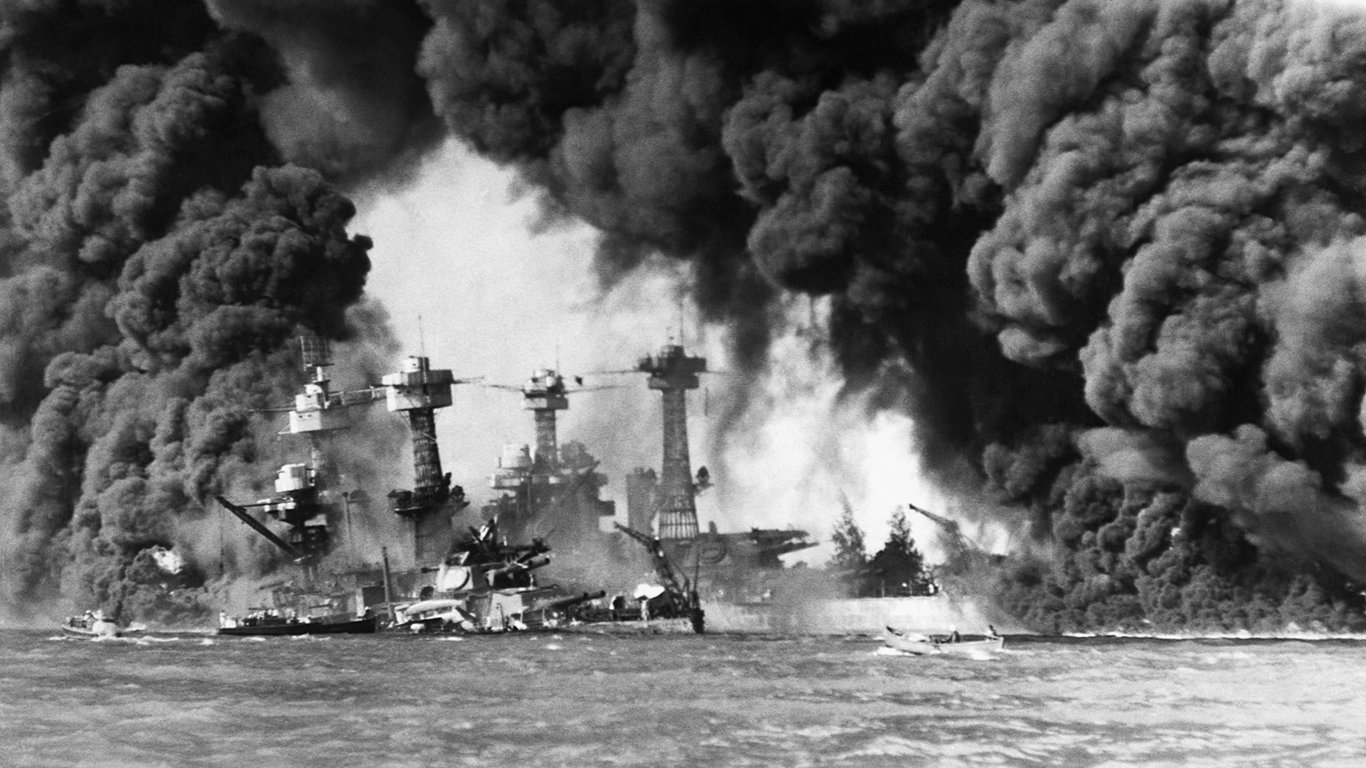
""Yesterday, December 7, 1941-a date which will live in infamy -the United States of America was suddenly and deliberately attacked by the naval and air forces of the Empire of Japan." President Franklin D. Roosevelt spoke these words in an address to a joint session of Congress and a nationwide radio audience. He continued to set the tone for the United States' entrance into World War II."
"The surprise strike by the Imperial Japanese Navy was expected to prevent the U.S. Pacific fleet from interfering with planned military actions throughout Southeast Asia. However, this attack would instead provoke the U.S. Navy to launch a campaign of its own against the Japanese, which would ultimately precipitate the end of the war. Here, 24/7 Wall St. is taking a closer look at the battle and what naval vessels were present."
On December 7, 1941, the Imperial Japanese Navy carried out a surprise naval and air strike at Pearl Harbor that destroyed significant U.S. warships and caused heavy losses. The attack aimed to neutralize the U.S. Pacific Fleet and secure freedom of movement for Japanese operations across Southeast Asia. The unexpected strike instead mobilized the U.S. Navy to conduct an offensive campaign against Japan that contributed to Japan's eventual defeat. A catalog of warships and submarines involved lists vessel types, armaments, speed, displacement, and aircraft complements, with vessels organized chronologically in historical records. Public and congressional opinion shifted rapidly toward full U.S. participation in World War II.
Read at 24/7 Wall St.
Unable to calculate read time
Collection
[
|
...
]